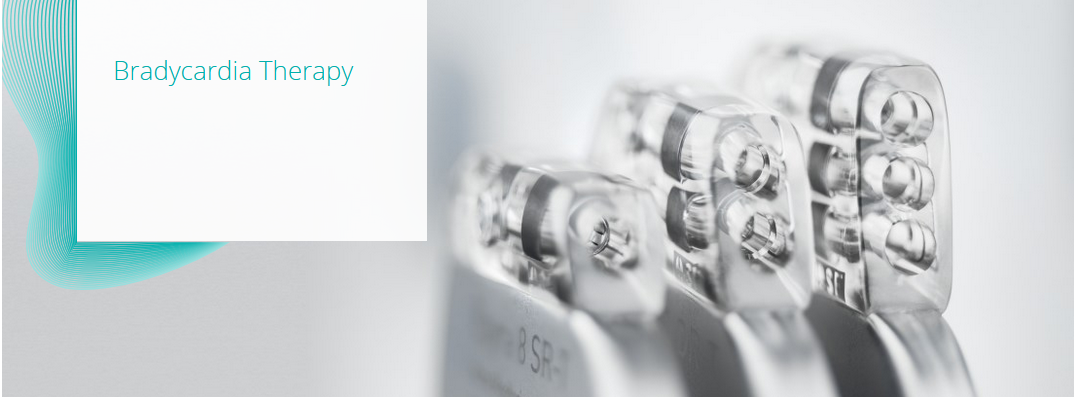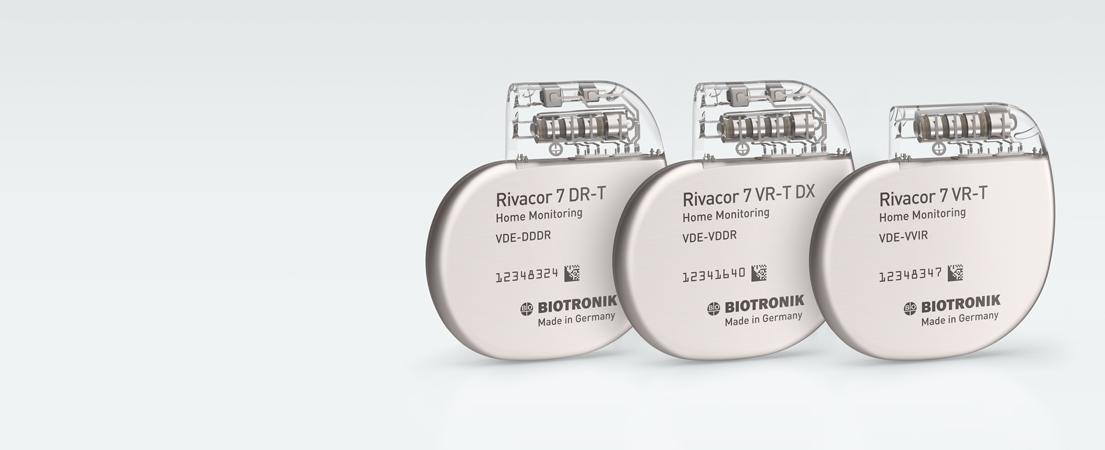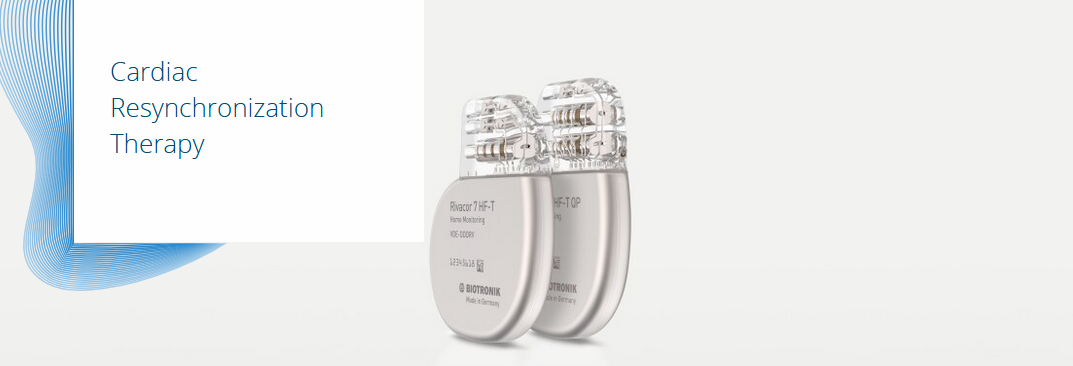
Pacemaker - Bradycardia Therapy
A bradycardia is a condition of the heart, where the heart is beating in a (sometimes irregular) rhythm that is too slow to maintain sufficient supply of oxygenated blood throughout the body. Such condition may be caused by dysfunctions of the sinu-atrial (SA) node, the atrio-ventricular (AV) node, or other parts of the heart's conduction system. In these cases bradycardia therapy aims at restoring a regular sinus rhythm and sufficient heart rate through battery-powered devices (referred to as pacemakers or implantable pulse generators [IPG]) using small electrical impulses delivered through leads directly to the heart in an effort to stimulate heart muscle cells externally, when intrinsic stimulation fails or is unreliable.
Pacemaker Implantation
A slow heartbeat rate is called bradycardia. A slow heart rate does not necessarily mean a patient has an underlying health problem. Athletes, for example, can have very slow resting heart rates and be perfectly healthy. If a slow heart rate, however, fails to supply the body with enough blood and oxygen, bradycardia is a severe health issue. Untreated bradycardia can lead to heart failure or sudden cardiac death. The only way to treat bradycardia long-term is to implant a pacemaker. A pacemaker is a small device that is implanted under the skin or chest muscle near the collarbone. It is connected to the heart with one or two electrodes (also called "leads") and serves as the heart's artificial "timekeeper". The pacemaker continuously monitors the heart's activity, sending electrical impulses to restore a normal rhythm if it beats too slowly or irregularly.

ICD - Tachycardia Therapy
What Is an ICD?
Implantable cardioverter defibrillators (ICD) are devices that save the lives of patients at high risk of ventricular tachycardia or fibrillation.\nA tachycardia is a very fast heartbeat of more than 100 beats per minute. During tachycardia of the ventricles - the two main chambers of the heart beats too fast to pump sufficient blood to the body. This is life threatening and can lead to ventricular fibrillation. During ventricular fibrillation, the heart chambers can no longer contract. This causes cardiac arrest within minutes - the heart suddenly and unexpectedly stops beating and is one of the most common causes of sudden cardiac death. \nThe only way to stop ventricular fibrillation is defibrillation. An electric shock, defibrillation disrupts the tachycardia, allowing the heart to restart its activity in a normal rhythm. People who do not have an ICD can be defibrillated externally in an emergency. \nICDs offer patients at high risk of ventricular tachycardia or fibrillation the best protection against these life-threatening events. An implantable defibrillator works around the clock to automatically detect irregularities in your heartbeat and deliver the appropriate treatment. It stops life-threatening tachycardia and fibrillation with relatively weak and painless stimulation therapy or electrical shocks. Minor surgery is necessary to implant an ICD.
ICD Implantation
The procedure to implant an ICD is relatively simple. It is not open-heart surgery. You will receive antibiotics to reduce the risk of infection. The intervention will be performed under local anesthesia, and sometimes, short-term sedation. After preparing the incision site, the surgeon will make a small cut in your upper chest, well below your shoulder. The surgeon will insert wires called leads that deliver energy to the heart into a major vein near your collarbone. Using X-ray for visibility, the surgeon will guide the leads through your veins and place them at the correct locations in your heart. Then, the surgeon will implant the ICD in a pocket created at the incision beneath the skin. The surgeon will connect the leads to the defibrillator and program it for your specific medical needs. After a test to ensure that the ICD is working correctly, the surgeon will close the incision with a few stitches.

CRTD - Cardiac Resynchronization Therapy
What Is a CRT-D?
A CRT-D is an implantable cardiac resynchronization therapy (CRT) defibrillator for patients with heart failure. The device monitors the heart's rhythm, detects irregularities and corrects them with electrical impulses. Like an implantable defibrillator (ICD), a CRT-D stops life-threatening ventricular tachycardia and fibrillation with relatively weak and painless stimulation therapy or electrical shocks. CRT-Ds differ from ICDs in that they help your heart's lower chambers - the ventricles - work in tandem. To do this, CRT-Ds have three leads wires that deliver energy to the heart rather than one or two, as in an ICD. A CRT-P is a cardiac resynchronization therapy pacemaker that does not have the defibrillation capabilities of a CRT-D. CRT-Ds enhance the heart's effectiveness and increase blood flow. They improve heart failure symptoms like fatigue, shortness of breath and exercise intolerance. Cardiac resynchronization therapy significantly lowers the risk of life-threatening cardiac events. Many patient's quality of life improves significantly with a CRT-D. Surgery is necessary to implant a CRT-D
CRT-D Implantation
The procedure to implant a CRT-D is relatively simple and usually lasts two to four hours. It is not open-heart surgery. You will receive antibiotics to reduce the risk of infection. The intervention will be performed under local anesthesia, and sometimes, short-term sedation.
After preparing the incision site, the surgeon will make a small cut in your upper chest, well below your shoulder. The surgeon will insert three leads into a major vein near your collarbone. Using X-ray for visibility, the surgeon will guide the leads through your veins and place them in your heart's upper and lower chambers. Then, the surgeon will implant the CRT-D in a pocket created at the incision beneath the skin. The surgeon will connect the leads to the defibrillator and program it to your specific medical needs. After a test to ensure that the CRT-D is working correctly, the surgeon will close the incision with a few stitches.

